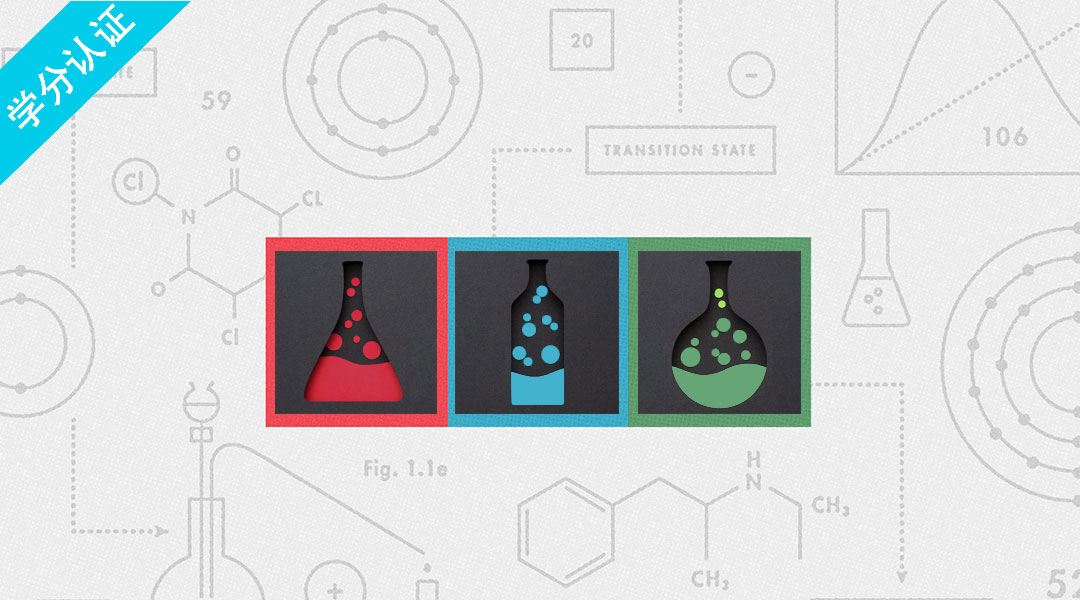
当前课程知识点:Geology and Engineering Geology > 9 Geological Engineering Attributes of Soils > 9.2 Attributes of Soils > Chapter 9.2.2 Water-Physical Properties of Soil
返回《Geology and Engineering Geology》慕课在线视频课程列表
返回《Geology and Engineering Geology》慕课在线视频列表
同学们好 欢迎来到地质学与工程地质课程
受周围环境的影响 自然界土体中的水分
有时会发生不同程度的变化
从而引起土体呈现出各种各样的性质
这也就是土的水理性质
它主要包括稠度 膨胀性 收缩性和崩解性等
随着含水率的变化
粘性土可以表现出不同的物理状态
它的工程性质呢也会发生很大的变化
当含水率很小的时候
粘性土比较坚硬 处于固体状态
而且具有较高的强度 随着含水率的增加
土体逐渐变软 甚至不能保持一定的形状
呈现流动状态
粘性土的这种因含水率变化而呈现出的
软硬程度不同的特性 称为土的稠度
粘性土在一定的含水率范围内可以呈现可塑性
也就是说在外力作用下可以被揉塑成
任意的形状而不发生裂缝
当外力解除后仍然保持已有的形状
不回弹也不坍塌的一种性质
可塑性是粘性土区别于砂土
砾粒土的一个重要的特征
所以粘性土又叫塑性土
随着含水率的变化 粘性土从一种稠度状态
转变为另一种稠度状态
转变点的含水率称为界限含水率
它是粘性土的重要的特性指标
它对于阐述粘性土的性质及分类具有重要的意义
相应的粘性土从流动状态转变为
可塑性状态的界限称为液限
又叫做塑性上限或流限
可以采用锥式或者是碟式液限仪试验来测得
而粘性土从可塑性状态转变为
半固体状态的界限含水率称为塑限
又叫做塑性下限 可以采用搓条法
或者是液塑限联合测定仪的试验来得到
粘性土的液限与塑限之差称为塑性指数
用不带百分号的数值来表示
它反映了粘性土处于
可塑性状态的含水率的变化范围
塑性指数越大 它表明土的可塑性就越强
通常按照塑性指数将粘性土分为粘土
粉质粘土和粉土或者是砂类土三类
土的天然含水率和塑限的差值与塑性指数之比
称为液性指数 用小数来表示
它反映了粘性土在天然状态下的稠度
我们可以看出 当天然含水率小于塑限时
液性指数小于0 天然土呢处于坚硬的状态
当天然含水率大于液限时 液性指数大于1
天然土处于一种流动状态
而当天然含水率处于塑限和液限之间的时候
液性指数在0到1之间 天然土处于可塑状态
需要说明的是 塑限和液限目前都是
采用扰动土进行测量得到的
土的结构已被彻底的破坏
丧失了原有的结构强度
所以有时土的天然含水率即使大于了液限
也未必发生流动
含水率大于液限 它只是意味着当土的结构
遭受破坏的时候它将转变为流动状态
也就是变成粘滞的泥浆
土浸水而发生体积增加的性能称为土的膨胀性
这主要是由于土浸水后
使土颗粒表面的弱结合水水膜厚度增大而引起的
土的膨胀性通常用膨胀率 膨胀力
和膨胀含水率来表示
膨胀率呢它是土浸水后
所增加的体积与原体积的比值
用百分数来表示
可以采用无侧胀的膨胀仪测量得到
膨胀力它是土体在有侧限条件下充分吸水
在不发生竖向膨胀情况下所产生的最大压力值
在实验室内通常采用压缩仪来测量得到
而土体浸水膨胀稳定后的含水率称为膨胀含水率
用百分数来表示
测量方法与土的天然含水率测定相同
土失水而发生的体积缩小的性能称为土的收缩性
通常用体缩率和线缩率来表示
体缩率呢它是粘性土在温度100
到105度下烘干得到的收缩稳定后
所减小的体积与原体积之比
用百分数来表示 相应的线缩率
可以表示为试验前后试样高度差
与试验前试样高度的比值 也是用百分数来表示
粘性土由于浸水而发生
崩解 散体的特性称为崩解性
土的崩解通常可以造成塌岸等灾害
从而影响到边坡的稳定性
它通常用崩解时间 崩解速度
崩解特性来表述
崩解时间呢它是一定体积的土体
一般是边长为5厘米的立方体
它完全崩解所需要的时间
崩解速度呢它是土样在崩解过程中
质量的损失与土样原始
质量的比值和时间的关系
崩解特性它是土体在崩解过程中的各种现象
比如有的崩解呈散粒状 有的崩解呈块状等等
这节课我们学习了土的水理性质
通过这节课的学习同学们要了解工程中
常用的土的水理性质定量评价指标
重点掌握粘性土的塑性指标 也就是液限
塑限 塑性指数和液性指数
-0.1 Human Engineering Activities and the Geological Environment
--Chapter 0.1 Human Engineering Activities and the Geological Environment
-0.2 Tasks for Engineering Geology
--Chapter 0.2 Tasks for Engineering Geology
-0 Quiz--Homework
-1.1 Formations and Evolution of the Earth
--Chapter 2.1 Formations and Evolution of the Earth
-1.2 Basic Attributes of the Earth
--Chapter 1.2 Basic Attributes of the Earth
-1.3 Construction of the Geo-sphere and the Geological Processes
--Chapter 1.3 Construction of the Geo-sphere and the Geological Processes
-1 Quiz--Homework
-2.1 Crustal Movement
--Chapter 2.1 Crustal Movement
-2.2 Magmatism
-2.3 Metamorphism
-2.4 Earthquake
-2 Quiz--Homework
-3.1 Introduction
-3.2 Weathering Effects
--chapter 3.2.1 Physical Weathering
--chapter 3.2.2 Chemical and Biological Weathering
--chapter 3.2.3 Weathering Products and Influencing Factors of the Weathering Process
-3.2 Weathering Effects--Homework
-3.3 Geological Effects of the Flowing Surface Water
--chapter 3.3.1 Geologic Process of Temporary Torrents
--chapter 3.3.2.1 River Erosion Effects
--chapter 3.3.2.2 River Transport and Sedimentation Effects
-3.3 Geological Effects of the Flowing Surface Water--Homework
-3.4 Geological Effects of Winds
--Chapter 3.4 Geological Effects of Winds
-3.4 Geological Effects of Winds--Homework
-3.5 Geological Effects of Glaciers
--Chapter 3.5 Geological Effects of Glaciers
-3.5 Geological Effects of Glaciers--Homework
-3 Quiz Easy--Homework
-3 Quiz Enhanced--Homework
-4.1 Minerals
--Chapter 4.1.1 Minerals and Their Morphological Characteristics
--4.1.2 Minerals and Rocks-Mineral Characteristics-Physical and Mechanical Prop
--Chapter 4.1.3 Visual Identification of Common Minerals
-4.1 Minerals--Homework
-4.2 Magmatic Rocks
--Chapter 4.2.1 Main Mineral Compositions of Magmatic Rocks
--Chapter 4.2.2 Texture and Structure of Magmatic Rocks
--Chapter 4.2.3 Common Classification and Identification Methods for Magmatic Rocks
--Chapter 4.2.4 Basic Characteristics of Common Magmatic Rocks Ⅰ
--Chapter 4.2.5 Basic Characteristics of Common Magmatic Rocks Ⅱ
-4.2 Magmatic Rocks--Homework
-4.3 Sedimentary Rocks
--Chapter 4.3.1 Material Compositions of Sedimentary Rocks
--Chapter 4.3.2 Texture and Structure of Sedimentary Rocks
--Chapter 4.3.3 Basic Characteristics of Common Sedimentary Rocks
-4.3 Sedimentary Rocks--Homework
-4.4 Metamorphic Rocks
--Chapter 4.4.1 Mineral Composition and their Texture andStructure
--Chapter 4.4.2 Basic Characteristics of Metamorphic Rocks
-4.4 Metamorphic Rocks--Homework
-第4章 Quiz Easy--Homework
-第4章 Quiz Enhanced--Homework
-5 The Geologic Times
--Chapter 5 The Geologic Times
-5 Quiz--Homework
-6.1 Horizontal Structure and Dipping Structure
--Chapter 6.1 Horizontal Structure and Dipping Structure
-6.2 Fold Structure
-6.3 Fault Structure
--Chapter 6.3.2 Characteristics and Types of Faults
--Chapter 6.3.3 Fault Identification in the Wild
-6 Quiz Easy--Homework
-6 Quiz Enhanced--Homework
-7.1 ntroduction
--Chapter 7.1.1 Types of Geological Maps
--Chapter 7.1.2 Scale of Geological Maps
-7.2 Presentation of the Geological Maps
--Chapter 7.2.1 Formation Lithology
--Chapter 7.2.2 Geological Structure
--Chapter 7.2.3 Contact Relations Between Stratas
-7.3 Reading and Analysis of the Geological Maps
--Chapter 7.3 Reading and Analysis of the Geological Maps
-7 Quiz Easy--Homework
-7 Quiz Enhanced--Homework
-8.1 Basic Conceptuals
--Chapter 8.1 Basic Conceptuals
-8.1 Basic Conceptuals--Homework
-8.2 Reservation and Movements of Ground Water
--Chapter 8.2 Reservation and Movements of Ground Water
-8.2 Reservation and Movements of Ground Water--Homework
-8.3 Movements of the Ground Water
--Chapter 8.3 Movements of the Ground Water
-8.3 Movements of the Ground Water--Homework
-8.4 Ground Water Quality
--Chapter 8.4 Ground Water Quality
-8.4 Ground Water Quality--Homework
-8.5 Ground Water Related Issues on Engineering Geology
--Chapter 8.5 Ground Water Related Issues on Engineering Geology
-8.5 Ground Water Related Issues on Engineering Geoligical Problem--Homework
-8 Quiz Easy--Homework
-8 Quiz Enhanced--Homework
-9.1 Soil Mass
-9.1 Soil Mass--Homework
-9.2 Attributes of Soils
--Chapter 9.2.1 Physical Properties of Soil
--Chapter 9.2.2 Water-Physical Properties of Soil
--Chapter 9.2.3 Mechanical Properties of Soil
-9.2 Attributes of Soils--Homework
-9.3 Engineering Classification of Soils
--Chapter 9.3 Engineering Classification of Soils
-9.4 Special Soils and Its Engineering Attributes
--Chapter 9.4.1 Soft Soil and Its Engimeering Attributes
--Chapter 9.4.2 Loess and Its Engineering Attributes
--Chapter 9.4.3 Expansive Soil adn Its Engineering Attributes
-9.4 Special Soils and Its Engineering Attributes--Homework
-9 Quiz Easy--Homework
-9 Quiz Enhanced--Homework
-10.1 Introduction
--10.1 Introduction--Homework
-10.2 Physical and Water-Physical Properties of Rocks
--Chapter 10.2 Physical and Water-Physical Properties of Rocks
--10.2 Physical and Water-Physical Properties of Rocks--Homework
-10.3 Mechanical Properties of Rocks
--Chapter 10.3.1 Deformation Characteristics
--10.3 Mechanical Properties of Rocks--Homework
-10.4 Structural Plane and Structural Body of Rock Mass
--Chapter 10.4 Structural Plane and Structural Body of Rock Mass
--10.4 Structural Plane and Structural Body of Rock Mass--Homework
-10.5 Features and Mechanical Properties of the Structural Plane
--Chapter 10.5.1 Properties of Structural Plane
--Chapter 10.5.2 Mechanical Properties of Structural Plane
--10.5 Features and Mechanical Properties of the Structural Plane--Homework
-10.6 Mechanical Properties of Rock Mass
--Chapter 10.6 Mechanical Properties of Rock Mass
--10.6 Mechanical Properties of Rock Mass--Homework
-10.7 Engineering Classification of Rock Mass
--Chapter 10.7.1 Engineering Classification of Rock Mass Ⅰ
--Chapter 10.7.2 Engineering Classification of Rock Mass Ⅱ
--10.7 Engineering Classification of Rock Mass--Homework
-10 Quiz Easy--Homework
-10 Quiz Enhanced--Homework
-11.1 Slope Deformation and Destruction
--Chapter 11.1.1 Slope Deformation
--Chapter 11.1.2 Slope Destruction
-11.1 Analysis on the Stability of Slopes--Homework
-11.2 Factors on the Stability of Slopes
--Chapter 11.2 Factors on the Stability of Slopes
-11.3 Analysis on the Stability of Slopes
--Chapter 11.3 Analysis on the Stability of Slopes
-11.3 Analysis on the Stability of Slopes--Homework
-11.4 Structural Analysis Method on Rocky Slope Stability
--Chapter 11.4.1 Stereographic Projection Method Ⅰ
--Chapter 11.4.2 Stereographic Projection Method Ⅱ
-11.5 Measures for Preventing and Controlling the Slope Deformation
--Chapter 11.5 Measures for Preventing and Controlling the Slope Deformation
-11.5 Measures for Preventing and Controlling the Slope Deformation--Homework
-11 Quiz Easy--Homework
-11 Quiz Enhanced--Homework
-12.1 Underground Caverns and the Stress Distribution
--Chapter 12.1 Underground Caverns and the Stress Distribution
-12.1 Underground Caverns and the Stress Distribution--Homework
-12.2 Deformation and Destruction of the Adjacent Rocks
--Chapter 12.2.1 Brittle Adjacent Rock
--Chapter 12.2.2 Plastic Surrounding Rock and Surrounding Rock Stability Sign
-12.3 Factors on Stability of the Adjacent Rocks
--Chapter 12.3 Factors on Stability of the Adjacent Rocks
-12.4 Measures for Preventing Instability of the Adjacent Rocks
--Chapter 12.4 Measures for Preventing Instability of the Adjacent Rocks
-12 Quiz--Homework
-13.1 Dam Foundation of the Water Conservancy Project
--Chapter 13.1.1 Dam Types and Requirements for Engineering Geological Conditions
--Chapter 13.1.2 Deformation Failure Mode and Stability Analysis
-13.2 Common Methods of Foundation Constructions
--Chapter 13.2 Common Methods of Foundation Constructions
-13 Quiz--Homework
-14.1 Reservoir Leakage
--Chapter 14.1 Reservoir Leakage
-14.2 Stability of the Reservoir Bank
--Chapter 14.2 Stability of the Reservoir Bank
-14.3 Reservoir Surrounding Immersions and Sedimentations
--Chapter 14.3 Reservoir Surrounding Immersions and Sedimentations
-14 Quiz--Homework
-15.1 Introduction
-15.2 Engineering Geological Mapping
--Chapter 15.2.1 Research Content
--Chapter 15.2.2 Structural Plane Statistics
-15.3 Engineering Geological Exploration and Field Experiments
--Chapter 15.3 Engineering Geological Exploration and Field Experiments
-15.4 Instructions on the Geological Compass
--Chapter 15.4 Instructions on the Geological Compass
- Quiz--Homework





